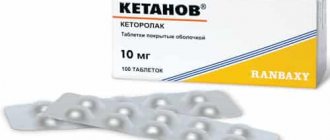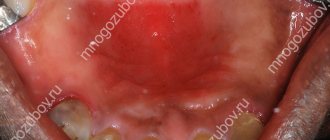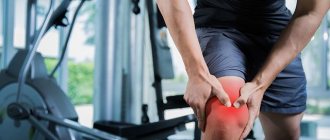Painful sensations after treatment of pulpitis may be normal or a consequence of complications. In order to differentiate these conditions and determine whether it is worth seeing a doctor immediately, it is important to assess the nature of the pain, the time during which it persists, and general well-being.
It is worth noting that in most cases, one of the most important stages in the treatment of pulpitis is the removal of the pulp or neurovascular bundle of the tooth. Many patients wonder: can a tooth hurt after treating pulpitis with this method? Despite the absence of a “nerve”, pain may be observed, this is a natural reaction to the intervention - removal of the pulp, treatment and filling of the root canals. It is important to know when it is normal and when pain is caused by a complication.
Natural pain after pulpitis treatment
Why does a tooth hurt after pulpitis treatment if there are no complications?
After the anesthesia wears off, pain may appear in the area of the causative tooth, and normally this condition is characterized by the following symptoms:
- the pain gradually subsides - an unpleasant sensation of a certain degree of severity may persist for some time, but it does not intensify;
- already 1–3 days after the procedure, the pain noticeably subsides;
- there are no other symptoms - bleeding, severe swelling and redness of the gums, increased body temperature, general weakness.
It is difficult to predict how much a tooth hurts after treatment for pulpitis; it depends on the individual characteristics, the specific tooth and the complexity of the root system, the presence or absence of concomitant diseases. The norm is that moderate pain persists for up to 7 days. Important: the intensity of pain becomes less over time.
It is difficult to talk about the norm if there are such “indicators” of complications as fever, swelling, too much pain, including increasing pain. There are several possible complications of endodontic treatment of pulpitis.
Tooth hurts after nerve removal
Moderately severe pain that bothers the patient immediately after depulpation and tooth filling should be considered as normal. Most often, a tooth hurts after nerve removal due to slight damage to healthy tissue in preparation for filling. Such pain, which is commonly called post-filling pain, goes away after five to seven days. To reduce discomfort, the dentist will prescribe effective painkillers.
Intense acute pain is no longer a normal option. It occurs under mechanical influence on the treated tooth (biting, pressing), under the influence of thermal irritants (cold, hot drinks), at night without any provoking factors. The cause of such pain is often mistakes made during endodontic treatment. The main errors are discussed in this article.
Exit of filling paste beyond the root apex
One of the most common mistakes is the penetration of the filling paste beyond the root, that is, into the jawbone tissue. Since the paste is a foreign body for the body, inflammation develops around the treated tooth, which causes discomfort.
To avoid such a mistake, the dentist must carefully prepare for the procedure and then take an x-ray to control the quality of the manipulations performed. Preparation consists of measuring the length of the canals using special tools. So-called K-files are introduced into the canal and connected to the apex locator. On the latter’s screen, the doctor will see when the instrument reaches the apex of the root and will be able to accurately determine its length.
When depulping multi-rooted teeth, it is necessary to measure the length of each canal. Upon completion of the measurements, K-files are introduced simultaneously into all canals for their entire length, after which a control x-ray is taken to confirm the accuracy of the measurements. Careful preparation for obturation is the first condition for high-quality manipulation, but not the only one.
The second condition is to control the filling of the channels using x-rays. The picture is taken after their obturation, but before the restoration of the coronal part with a light-curing polymer. It will show that the cavities are sealed to their entire length. If some of the paste has gone beyond the top, it will not go unnoticed. The dentist is obliged to unfill the canal and carry out the procedure again.
Diagnostics.
To diagnose this complication of endodontic treatment, it is necessary to take an x-ray of the treated tooth or computed tomography. The photo will show that some of the paste has penetrated into the jawbone.
How to treat.
The correct strategy is revision dental treatment. It is necessary to remove the filling (if the clinic is well equipped, this is quite easy to do) and re-obturate the cavities. As an additional method, you can use physiotherapy to help relieve pain; Phonophoresis with hydrocortisone, UHF and laser physiotherapy are effective.
Incomplete closure of channels
The second cause of post-filling pain is a mirror image of the previous one. The canal may not be completely sealed. An infection develops in the voids left behind, which is why the tooth hurts after the nerve is removed. A dentist's mistake can be caused by an incorrect assessment of the length of the canal, a lack of quality control of treatment, or ignoring the unsatisfactory results of this control, which indicate the need for a repeat procedure.
Diagnostics.
A dental CT or x-ray is used for diagnosis. Orthopantomography is not always informative enough.
How to treat.
To correct the error, you need to remove the old filling and re-obturate the entire length of the canal. If your dentist says the pain will go away on its own, go to another clinic. To quickly reduce pain, you can use physiotherapeutic procedures and analgesics with an anti-inflammatory effect.
Poor quality filling
Why does a tooth hurt after removing the nerve and filling the canals, if the x-ray shows that the canals are completely closed and the paste does not go into the jaw bone? Pain can be caused by voids in any part of the root that remain after poor-quality obturation.
The filling material must fill the root completely, not only from the mouth to the apex, but throughout its entire diameter. Modern materials make it possible to successfully solve this problem, but if the procedure is performed by an unqualified specialist, or in violation of technology, voids may form in the root after the paste hardens.
If the technology is followed, depulpation is carried out on the first visit to the dentist. After depulpation, turunda with a powerful antiseptic is introduced into the canal, and a temporary filling is placed on the coronal part. On the second visit, the dentist removes the turunda, once again treats the cavities with an antiseptic, and only after that introduces gutta-percha or a special paste. Then, X-ray quality control of the manipulations is mandatory.
A permanent filling on the crown (direct restoration) is placed already on the third visit, after the material has completely hardened. Forcing events can disrupt the hardening process of the paste and worsen the quality of treatment.
Diagnostics and assistance.
For diagnosis, an X-ray examination or CT scan of the tooth is used. The problem is solved by repeated dental treatment.
Poor isolation of the tooth from saliva during filling
Before filling the canals, the dentist must reliably isolate the tooth from saliva. This is done using special plates called rubber dams. If the isolation is insufficient, pathogenic microorganisms can enter the cavity along with saliva. The infection will spread to the remaining healthy tissue and cause pain.
Incomplete removal of carious tissues
If a patient with pulpitis or caries has a toothache after removing a nerve, a possible cause may be incomplete removal of carious tissue. Carious tissues are a source of bacterial microflora that is extremely resistant to antibiotics. Successful treatment of caries is possible only with complete drilling of the affected tissues at the depulpation stage. Some healthy tissue is removed, and an anesthetic is injected into the canals and pulp chamber to ensure that the affected tooth is sanitized.
Incomplete removal of carious tissue is one of the typical causes of post-filling pain. Pathogenic microflora remains in the tooth, infection and inflammation develop, and the pathological process spreads to healthy tissue.
If there is poor isolation from saliva before filling or if the canals are treated poorly, pain may occur after several weeks or even months. Regardless of their intensity, you need to seek help from a dentist, since folk remedies will not be able to cope with the infection. In 99% of cases, bacteria are resistant even to the action of strong antibiotics, so there is no need to talk about the effectiveness of rinsing or lotions.
How to treat.
The only effective method is to remove the filling, revise the canals using antiseptics and refill them.
Non-standard structure of the root system
The root system has a complex and not always predictable structure. In some cases, dentists find four canals in three roots. Another option for a non-standard structure is the branching of channels.
An integral condition for successful dental treatment is complete obturation of all canals and their branches. Unfortunately, in some cases the branches are not visible even on an x-ray. This is exactly the case when even an experienced specialist is not immune from mistakes.
In unattended branches, an infection develops, and events develop according to the same scenario that was described in the previous sections. During treatment, a similar strategy is used - opening and revision of the tooth, antiseptic treatment, and re-filling.
A fragment of an endodontic instrument in a tooth
Very thin endodontic instruments are used to drill the canals and determine their exact length. In rare cases, the tip of the instrument breaks off, remains in the cavity and causes post-filling pain.
Diagnostics. This dental error is diagnosed using an x-ray examination. To correct the error, you need to unfill the tooth, remove the foreign body, carry out revision treatment and re-filling.
Root perforation
As mentioned earlier, drilling out carious and part of healthy tissue is an essential condition for the successful treatment of pulpitis. In rare cases, when processing the root, its wall is damaged and a hole is formed connecting the canal to the jaw bone.
Root perforation is manifested by intense pain, which occurs immediately after dental treatment and is difficult to relieve even with strong analgesics. If an alarming symptom appears, you should immediately consult a doctor without waiting for your next scheduled appointment.
Diagnosis and treatment.
An x-ray or CT scan is used for diagnosis. Therapy consists of closing the perforation with calcium-containing drugs. Only after obturation of the hole can further treatment begin.
Trigeminal neuralgia
Dental manipulations can provoke paroxysm of trigeminal neuritis, especially if the patient has previously encountered similar problems. There is no mistake by the dentist in this situation; the cause of post-filling pain is an acute reaction of the body.
Diagnostics.
Instrumental diagnostics do not reveal objective causes of pain. There is no perforation, the cavities are completely filled, the filling material does not extend beyond the top. For differential diagnosis, accompanying symptoms are used, in particular, numbness of the facial skin, paresthesia, unilateral but diffuse pain spreading to the temporal and parietal zones. These signs indicate trigeminal neuralgia.
Treatment
complex trigeminal neuralgia. It includes drug therapy with drugs with anti-inflammatory and anti-exudative effects, as well as physical therapy.
Individual reaction to filling material
After successful and high-quality dental treatment, pain can be caused by an individual reaction to the filling material. Its development is indicated by swelling of the gums. The basis of treatment is antihistamines. To reduce pain, you can take analgesics with anti-inflammatory effects.
If your tooth hurts after dental treatment, do not try to solve the problem yourself. Contact a specialist. He will conduct a diagnosis and draw up an effective treatment plan aimed at eliminating the cause of the pain, and not at relieving the symptom.
Removing the filling material beyond the root apex
If, after treatment of pulpitis, the tooth hurts when pressed, perhaps we are talking about the removal of the filling material beyond the root of the tooth, into the adjacent tissues. The intensity of the sensation depends on how much material has gone beyond the apex of the root. Despite the fact that today a doctor has ample opportunities to control the accuracy of canal filling, as well as the use of high-quality materials, this can happen. It is worth noting that X-ray monitoring of treatment is intended to prevent the development of such a consequence - after the filling is completed, an image should be taken in which, in the event of a re-filling, the doctor will be able to notice excess material and choose the tactics for further action. Re-filling or removal of filling material beyond the root apex in itself does not pose a particular threat.
The exit of the filling material beyond the root apex can cause long-term pain immediately after the anesthetic wears off and persists for a long time - up to several months. This is a natural reaction of tissues to foreign material. Removal of material may be due to the following reasons:
- difficulties in determining the length of channels;
- incorrect selection of a pin from materials for the canal;
- lack of apical stop, etc.
However, this is not the only possible treatment difficulty that provokes pain.
After extraction
Extracting the root unit is a surgical procedure. It is associated with a violation of the integrity of oral tissues. It is not surprising that the human body reacts so sharply to the treatment.
Normally, after removal, the thermometer can show up to 38.5°C for no longer than three days. It is not advisable to take antipyretics - such tactics can change the course of recovery reactions. However, in some cases, doctors prescribe anti-inflammatory drugs to speed up regeneration processes. Some of them not only stop inflammation, but also normalize body temperature. If the doctor told you to use pills, you should do so. Any amateur activity is prohibited here.
In difficult clinical situations, antibiotics are prescribed after extraction. There are patients who are critical of such prescriptions. It seems to them that antibacterial drugs lower the immune system and their use after an ordinary removal of a unit is unjustified.
This attitude towards antibiotics is wrong. They help damaged tissues heal faster and eliminate the development of postoperative complications. Dentists never prescribe them just like that. Therefore, if a specialist issues a prescription after extraction, you need to take its prescription seriously.
Most often, an elevated temperature is recorded after removal:
- "eight";
- incisors, fangs, molars, if the operation was preceded by an advanced purulent process;
- several units at once.
Insufficient canal filling
The opposite situation, in which a tooth may hurt after treatment of pulpitis, is insufficient filling of the root canals, the formation of voids at the apex of the root. In this case, often unpleasant sensations do not occur immediately, but as the inflammatory process develops - this can happen either after 1-2 weeks or after a longer period of time.
Here, painful sensations are associated with the proliferation of pathogenic microorganisms in the voids. This process leads to one of the diseases:
- periodontitis - inflammation of the peri-root tissues;
- tooth root apex cyst;
- granuloma.
Depending on the individual characteristics of the body, pain may appear immediately or make itself felt when the cyst or granuloma has reached an impressive size. Its intensity is often low, minor pain is more often observed when biting after treatment of pulpitis, and in the absence of mechanical impact on the tooth there is no discomfort at all.
What is the canal cleaning procedure?
Before moving on to the issue of pain, let’s define what the root canal cleaning procedure itself is. Typically, such surgery is performed because the root is severely damaged. There are two reasons - inflammation or the development of infection.
Most often, root cleaning is performed in patients whom doctors have diagnosed with pulpitis or periodontitis. Cleaning and filling in such a situation are necessary in order to stop the destruction processes and save the tooth. The only alternative is deletion.
During the cleaning process, the soft tissues of the oral cavity are also affected. And here it is important to understand one of the central features of the procedure. Cleaning is done on already inflamed tissues. Since the inflammatory process usually affects large areas and spreads quickly, it will continue to occur for some time. Then the state will fade and stabilize. This usually takes several days.
Due to residual inflammation, the tooth may actually hurt for some time - this is normal. At the same time, the pain itself has a dull, aching character. It is not strong and most patients do not even have to take analgesics. Usually the discomfort intensifies slightly as the evening approaches.
If the patient’s body is in normal condition and nothing affects its regenerative abilities, after two or three unpleasant sensations begin to subside. The feeling of discomfort lasts longer, especially if the operation was traumatic or you have a complex root structure.
You will have to put up with pain much longer if, for some reason, you put off visiting the dentist until the last minute. In this case, the inflammation will become more and more severe, covering large spaces. Also, the rehabilitation process is extended if the patient has any systemic diseases of the body.
One of the root canals was not processed
This is one of the rarest complications, since before starting endodontic treatment the doctor will definitely prescribe an x-ray diagnosis. It allows you to reliably determine the number of channels and evaluate their structure. But there are cases of abnormal location of root canals or their extremely small sizes, which makes them unnoticed in the image.
This leads to the following situation: the doctor removes the pulp in each canal, but one remains unattended - the inflamed pulp continues to hurt, and pathogenic bacteria continue to multiply. Such pain is difficult to confuse with other complications - the patient simply does not receive relief after treatment, and the pain characteristic of pulpitis itself remains. The sensations are pulsating in nature, the pain intensifies when eating, exposure to temperature on the tooth, and becomes unbearable at night.
The same symptoms can be observed with incomplete removal of the pulp in the diagnosed canal. In both cases, other symptoms may be observed:
- headache, sensations “radiate” to the ear, temple - depending on the specific tooth;
- increased body temperature;
- symptoms of general malaise.
Most complications are related to the complexity of the canal structure, and the following is no exception.
The temperature has risen
A rise in temperature to 37.2 after cleaning the channels is normal.
In some cases, after visiting a dental clinic, the patient’s body temperature rises to 37-38 degrees. After cleaning the canals, the body may react in a similar way, since there has been intervention in the tissue, as well as exposure to dental materials, which can be perceived by the immune system as foreign bodies.
Additional reasons that need to be taken into account in order to promptly seek professional medical help:
- The beginning of the inflammatory process.
- Attachment of a secondary infection.
- Injury to tissues inside the tooth, on the gums.
- Tooth canal cleaning was carried out during a cold.
The body can respond with an increase in temperature even if the patient has shown excessive emotionality before or during the procedure. A stressful situation for the body is expressed in these specific symptoms. The norm is a temperature no higher than 37.2 degrees, which lasts 1-2 days. All other cases are violations requiring medical supervision.
Instrument breakage in the root canal
After treatment of pulpitis, the tooth may also hurt due to a broken instrument. Part of it remains in the root canal, and unpleasant sensations occur immediately or a few days after the visit to the dental office.
The nature of the pain may vary depending on the size of the fragment and other conditions.
It is worth noting that this complication is quite rare. This is explained by the fact that a good dental clinic uses modern, high-quality instruments from reliable manufacturers that are sufficiently durable. In addition, the rules for their use must be strictly observed, including multiplicity, force during exposure, etc. And finally, the doctor will notice the presence of a foreign body in the tooth on a control image, which he will prescribe after treatment.
In what cases is this normal?
Rinsing with a decoction of chamomile or sage will help relieve the condition.
Pain is considered normal if it does not intensify and gradually decreases. Unpleasant sensations can persist for a long time – up to 1 month. If the pain intensifies or becomes sharp 2-4 days after the procedure, it is necessary to repeat the cleansing or have the dental canals filled.
A gradually decreasing intensity of pain is a normal reaction of the body to the intervention in the gum tissue. Rinsing will help eliminate discomfort in the area of the treated tooth. It should be based on decoctions of medicinal herbs such as chamomile or sage.
Important! Increasing negative feelings and ignoring the problem can lead to tooth extraction.
Root perforation
Perforation is the creation of an artificial root hole. As a rule, in this case, the pain is sharp, unbearable and makes itself felt immediately after the anesthetic stops working. This can happen during instrumental processing of canals - preparing them for filling.
As in most other cases, the structure of the root system plays an important role here. Narrow, curved canals are a common cause of perforation. In this case, the tool does not move along the canal, but into the root wall.
If a tooth hurts for this reason after treatment of pulpitis, the symptom may be accompanied by bleeding. In addition, some patients report pain even with current anesthesia - subjectively it is perceived as the feeling of an injection into the gums. If the tooth was filled after perforation, the filling material may leak beyond the root. Severe pain persists for up to 3 weeks, and the main complication of this phenomenon is the inflammatory process.
Is it possible to treat teeth if you have a cold?
If the high temperature is caused by ARVI, herpes or other infectious diseases, then it is better to reschedule the appointment. The body at this moment is weakened and tuned to eliminate the disease, which means that the recovery process after dental treatment will be delayed. If you have a runny nose or cough, it will be difficult to sit in the dental chair during treatment. In addition, there is a high risk of spreading infection to the staff and other patients of the clinic.
However, there are situations when treatment cannot be delayed. In this case, you need to consult with your doctor, preferably by phone. He will decide whether to subject the weakened body to dental intervention or not.
Allergy
This complication of pulpitis treatment is easier to differentiate - an allergic reaction is often accompanied by tissue swelling. If it is a consequence of material moving outside the root canal, there may be swelling of the gums around the treated tooth. In some cases, it spreads to other areas - cheek, lip, depending on the specific tooth.
When pressure is applied, the pain becomes stronger, it is difficult to relieve with painkillers, and over time it only intensifies.
After caries closure
Sooner or later, everyone faces the need to close carious cavities. With caries, the pathological process does not extend beyond the hard tissues. If your health condition worsens after filling, you can assume:
- development of a viral, infectious or bacterial infection not related to a recent medical intervention;
- the addition of complications such as pulpitis, abscess, phlegmon.
Determining the root cause of the problem is actually not difficult. If the sealed molar looks healthy and does not hurt, the gums are not swollen or swollen, and the mucous membranes are not ulcerated, it means that with a 90-95% probability the temperature has not increased due to treatment at the dental center. It’s just that at the time of therapy the patient was already sick, but the symptoms of the disease had not yet manifested themselves or were barely noticeable.
The stress experienced during the operation of the drilling machine can create conditions for the rapid spread of infection. Then, upon coming home, a person will see frightening numbers on the thermometer.
What to do?
What to do if your tooth hurts after pulpitis treatment? The most important recommendation if you suspect a complication after treatment of pulpitis is a return visit to the doctor. If this is not possible, you should contact another specialist and explain the situation.
If it is not possible to visit the clinic immediately, you can use a painkiller - give preference to the one that you have already taken, to which there have been no negative reactions. However, it is better to try to consult with a specialist, if not in person, then by phone.
It is difficult to say exactly how quickly the pain will subside in each case. However, on average, after visiting the dentist, relief comes quite quickly:
- When removing the filling material beyond the root apex: a visit to the doctor will allow the specialist to remove excess material, and after 2-3 days the discomfort will subside.
- If the filling is insufficient: the doctor will choose a tactic for further treatment; it is quite possible that several visits will be needed to eliminate the inflammatory process - for larger cysts or granulomas, surgical treatment is also required. This complication requires refilling to prevent recurrent complications.
- If the pulp or part of it is intact: the doctor will remove the remaining pulp and repeat the manipulations that were required to treat pulpitis. The pain in this case goes away within a few days after all measures are completed.
- If an instrument breaks off: the doctor will perform an X-ray diagnostic and, if the presence of a broken instrument is confirmed, will remove it. In rare cases, resection of the root apex is performed.
- In case of perforation: the dentist will treat the canals without affecting the hole. Using modern osteoplastic materials, he will close it, which will save the tooth. If a purulent process occurs, several visits will be required to eliminate the inflammation.
- In case of gum injury: contacting a doctor will allow you to receive recommendations regarding antiseptic and healing agents for treatment at home. Relief occurs on average within 1–3 days.
- In case of an allergic reaction: it will be necessary to refill the root canals using other materials. The doctor will perform the necessary manipulations and also prescribe decongestants that will quickly eliminate unpleasant symptoms.
Content:
- After caries closure
- After root canal treatment
- After extraction
- After implantation
- After sinus lift
The problems that dentists have to solve can be serious or not so serious.
But any medical intervention must be carried out in accordance with established norms and rules. Only then will the likelihood of complications develop to a minimum. One of the most common unpleasant symptoms after dental treatment is fever. Many patients are confused and do not know what to do when it increases. After all, it is not always clear whether a fever is related to a recent dental course.
Dentists insist that if the temperature rises after dental treatment, patients immediately consult a doctor. Timely receipt of qualified medical care is the most reasonable decision in such situations.
What not to do?
If, after treatment, a tooth hurts when pressed or without mechanical action, you should under no circumstances resort to folk remedies such as heating, hot compresses, heating pads - if there is an inflammatory process, this can greatly worsen the condition. In case of allergic reactions, heat will also increase swelling.
It is also not recommended to use folk remedies for rinsing, which can cause a burn to the mucous membrane - iodine, tinctures of alcohol or vodka, liquids with the juice of “scorching” plants, etc. Even if there is no gum damage, such measures can worsen the situation.
It is also not worth taking various painkillers uncontrollably - firstly, you need to see a doctor in any case, and the effect of analgesics will not allow you to fully evaluate the clinical picture. Secondly, it can be dangerous to health.
It is important to visit a doctor at the first opportunity and perform all the necessary procedures to eliminate unpleasant consequences and improve the condition.
What can you do at home?
If toothache does not go away after the brushing process or causes serious discomfort, you should use medications or folk remedies to relieve symptoms. It is important to remember that any thermal effects on the area where dental intervention was performed are prohibited.
Drug therapy
To temporarily eliminate pain of varying severity, it is recommended to use some analgesics and anti-inflammatory drugs, such as Tempalgin, Baralgin, Nurofen, as well as Ketorol or Analgin. Before use, you should carefully study the instructions for use of the drug.
Traditional methods
Apply a cotton swab moistened with valerian tincture to the problem area.
In addition to medications, folk remedies help well. Pain or pus can be eliminated by applying a cotton swab dipped in lemon balm or valerian infusion to the damaged area. Clove or fir oil also helps well - apply 2-3 drops of it on a cotton swab. You need to apply it to the damaged area for 5-10 minutes.
Ice can be used as first aid, but the effect will be short-lived and mild. An alternative method of eliminating pain after cleaning the dental canals is massage of the auricle. It must be carried out from the side of the diseased tooth.
If fever is added to the pain, then in addition to traditional methods and medications, physiotherapy should be used. In this case, exposure to ultrasound or UHF helps well - after such procedures it is necessary to replace the filling and take an x-ray to monitor the condition.










